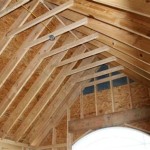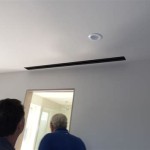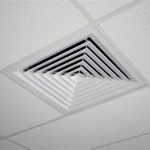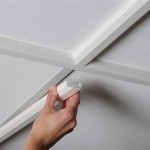HVAC Vents: Ceiling vs. Floor
Heating, ventilation, and air conditioning (HVAC) systems are essential for maintaining comfortable temperatures and air quality in homes and buildings. A key component of any HVAC system is the ventilation system, which distributes conditioned air throughout the space. One of the most important aspects of ventilation system design is the placement of vents. This article will explore the advantages and disadvantages of two common vent locations: ceiling vents and floor vents.
Ceiling Vents
Ceiling vents are a popular choice for HVAC systems, often preferred for their aesthetic appeal and ability to blend seamlessly with the ceiling design. They are typically installed in the center of each room and are designed to distribute air evenly throughout the space. This method provides a more consistent temperature distribution, as the warm air from the vents rises and spreads across the room.
One of the main advantages of ceiling vents is their ability to improve air circulation. Hot air naturally rises, and ceiling vents take advantage of this natural convection to distribute warmth efficiently. This can help to reduce drafts and create a more comfortable environment. Additionally, ceiling vents prevent the accumulation of dust and allergens near the floor, which can be beneficial for people with allergies or respiratory issues.
However, ceiling vents also come with certain disadvantages. One is the potential for noise. Since the air is being forced out from above, the sound of the airflow can be more noticeable, especially in smaller rooms. Another concern is the potential for uneven temperature distribution. If the vent is not properly sized or positioned, the air may not reach all corners of the room effectively. Lastly, ceiling vents can be more challenging to install and maintain, requiring professional assistance and access to the ceiling space.
Floor Vents
Floor vents are another common choice for HVAC systems, often preferred for their simplicity and ability to maximize floor space. They are typically installed near the baseboards or in the corners of rooms, often hidden behind furniture or decorative elements. Floor vents work by directing cool air downwards, creating a natural convection current that pushes warm air upwards towards the ceiling.
One of the primary advantages of floor vents is their ability to create a more even temperature distribution. The cool air from the vents is directed towards the floor, which helps to prevent the buildup of cold pockets near the ground. This can be particularly beneficial in homes with high ceilings, where ceiling vents may not effectively reach the floor. Additionally, floor vents are typically quieter than ceiling vents due to the lower velocity of the air being discharged.
However, floor vents also have their drawbacks. One is the potential for dust and allergens to be drawn into the vents. Since the air is being drawn in from the floor, any dust or allergens present on the floor can be sucked into the vent and circulated throughout the room. This can be a concern for people with allergies or sensitivities. Additionally, floor vents can sometimes create drafts, particularly when they are near windows or doors. They can also be a potential tripping hazard, especially for young children or elderly individuals.
Considerations for Choosing the Right Vent Location
The choice between ceiling vents and floor vents ultimately depends on several factors, including the specific needs of the occupants, the size and layout of the space, and the preference of the homeowner. Both ceiling and floor vents have their respective advantages and disadvantages, and the best choice for each situation will vary.
For example, if the primary concern is maximizing floor space, floor vents might be a better choice. If noise reduction is a top priority, ceiling vents might be a better option. Other factors to consider include the presence of allergies or sensitivities, the height of the ceilings, and the overall aesthetic of the room.
It is recommended to consult with an HVAC professional to discuss the best vent location for your specific needs and budget. They can help to assess factors such as room size, layout, and desired temperature distribution to ensure that the selected vent location will provide optimal performance and comfort.

3 Things You Can Do Today To More Evenly Heat Your Home Hb Service Team

Ceiling Ac Vents Pros And Cons Aire Serv

How To Choose And Place Hvac Registers 2025 Today S Homeowner

Changing All My A C Heating Ceiling Vents For Better Airflow Between Naps On The Porch

What Are The Diffe Types Of Vents In Your Home Jackson Sons

Wall Floor Ceiling Ventilation Master Building Materials Blog

How To Open And Close Ceiling Air Vents Angi

Floor Ac Ducts Pros And Cons

Why Are Air Conditioning Vents In My Floor And Not The Ceiling Real Estate Info Guide

Hvac Floor Registers Vs Wall Which Is Better Tuckey
Related Posts








